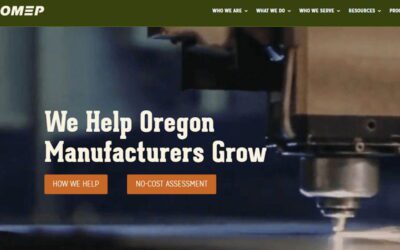Robotics — the technology that deals with robot development, operation, and applications — promises the greatest manufacturing productivity increase since the industrial revolution more than two centuries ago. For any manufacturing business or organization concerned with repetitive, programmable tasks — including sophisticated ones–now is the time to integrate robotics into business operations.
After decades of development and refinement, robotics not only shapes automated manufacturing, it creates capabilities for increased company-wide growth, efficiency, and profitability. Robotics can also perform jobs that employers find difficult to fill and accomplish tasks in environments where humans cannot survive. To better understand the rise of robotics in manufacturing, let’s take a closer look at some of the background, trends, facts, and figures related to current markets.
THE FACTS AND FIGURES BEHIND ROBOTICS
Robots perform only about 10 percent of manufacturing tasks today, but that number is expected to jump to around 25 percent by 2025.1
With a compound annual growth rate (CAGR) of 22.8 percent, robotics sales are poised for substantial expansion, too. International Data Corporation (IDC) predicts spending is expected to reach almost $231 billion in 2021.2
While vehicle manufacturing takes the lion’s share of robotics use in the United States, other industries also leverage the technology’s advantages. The following sectors comprise about 70 percent of robotics usage:
- Automotive
- Electrical and electronics (including microchip manufacturing)3
- Metal and machining
ROBOTICS CAN BOOST MANUFACTURERS’ BOTTOM LINES
Many organizations investing in business efficiencies from the top down capitalize on robotics to address common core problems in manufacturing operations. Implementing robotics can help:
Reduce turnover:
Limited wages and monotonous tasks result in high turnover—a common staffing problem with machine operators and other low-skill manufacturing positions.
Unfilled operator positions lead to production losses and administrative costs, but a robotics system is immune to such limitations.
Increase productivity with fewer defects:
One potent example involves a Chinese mobile-phone factory that robotized most of its operations, subsequently finding that productivity soared 250 percent and product defects dropped 80 percent.4
Improve multi-talented multi-tasking:
Within a machine cycle time, a robot can perform a broad variety of additional jobs, from lifting heavy objects and packing shipping crates to attaching labels and loading conveyors. Robotics expedites product development and delivery, too.
PROOF-OF-PERFORMANCE POTENTIAL
Other, diverse markets can also benefit from robotics to cut costs and boost profits. In 2012, Amazon founder Jeff Bezos made a bold business move, purchasing not only a large number of robots, but also the company that designed and manufactured them.6
Today about 30,000 robots work 24/7 at Amazon fulfillment centers, streamlining operations, reducing overhead and increasing revenues. Amazon’s success with robotics demonstrates its versatility
and opens a world of possibility to anyone with vision, whether in manufacturing or any number of other industries.
ADDRESSING COST CONCERNS
While robots have proven incredibly efficient and profitable to nearly all manufacturing operations, acquisition costs often run high — up to $250,000 per unit.
Clearly, there’s an imperative to acquire robotics technology, but how can a business afford it and still realize significant ROI? Many manufacturers find the answer in financing.
THE FAST-TRACK CAPITAL ALTERNATIVE
When you finance your robotics equipment, you avoid substantial, upfront payments that deplete cash reserves. That means you can launch your initiative now, plus enjoy many flexible features to stay nimble and competitive. Other benefits of financing your investment include:
- Access to automation efficiency as you manage human capital
- Bundling, with equipment, software, installation, maintenance, training and consulting fees all combined in a single contract
- Fixed monthly payments for enhanced cash flow and budget control
- Protection against obsolescence with mid-term upgrades and add-on options
- Master agreements and end-of-term options to accommodate growth and expansion
MAKING THE NEXT MOVE
The right funding partner can be integral in helping you create an equipment strategy that also helps align your business goals. Seek an organization with reliable capital resources and solid experience with all aspects of robotic technologies — from equipment knowledge to structuring expertise. Here are partnership must-haves to help attain successful development and results:
- Flexible structuring capabilities, such as operating lease or progress payments
- Ongoing, responsive service
- Client-focused, consultative approach
- Robotics and automation equipment financing expertise
- Exceptional regulatory knowledge, including legislative and tax trends
- Established manufacturer/ installer relationships and payment coordination
- Centralized resources that include in-house legal, tax and underwriting specialists.
SUMMARY
The future of your manufacturing business is within reach now, but it’s up to you to make the move to the enabling technologies. Nearly any manufacturer profits on multiple levels from investing in robotics. And as manufacturing becomes increasingly competitive, partnering with a fully qualified and innovative financing expert can make all your assets work more efficiently, both today and for years to come.
Robotics
Fortune, “The Multi-Billion Dollar Robotics Market Is About to Boom,” http://fortune.com/2016/02/24/robotics-market-multi-billion-boom
2 IDC, “Worldwide Semiannual Commercial Robotics Spending Guide,” “Worldwide Semiannual Commercial Robotics Spending Guide,” https://www.idc.com/getdoc.jsp?containerId=prUS42880417
3 The Economist, “The growth of industrial robots,” March 2017
4 Business Insider, “This company’s productivity soared…”, http://www.businessinsider.com/companys-productivity-soared-after-replacing-90-of-employees-with-robots-2017-2
5 Fortune, “Don’t Blame China For Taking U.S. Jobs,” http://fortune.com/2016/11/08/china-automation-jobs
6 The New Yorker, “Our Automated Future,” https://www.newyorker.com/magazine/2016/12/19/our-automated-future
Key Equipment Finance is providing this brief overview to raise awareness concerning trends in manufacturing. The information and recommendations contained herein are compiled from sources
deemed reliable, but are not represented to be accurate or complete. In providing this information, neither KeyBank nor its affiliates are acting as your agent, broker, advisor, or fiduciary, or offering any
tax, accounting, or legal advice regarding these instruments or transactions. If legal advice or other expert assistance is required, the services of a competent professional should be sought. Before
entering into any financing arrangement, please seek counsel from your own financial, tax, accounting, and legal advisors.
Key Equipment Finance does not make any warranties regarding the results obtained from the use of this information. Key Equipment Finance is a division of KeyBank National Association. KeyBank is
Member FDIC. ©2018 Key Equipment Finance



